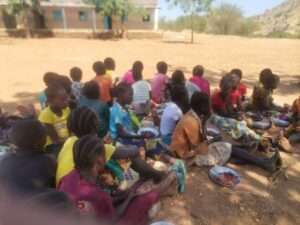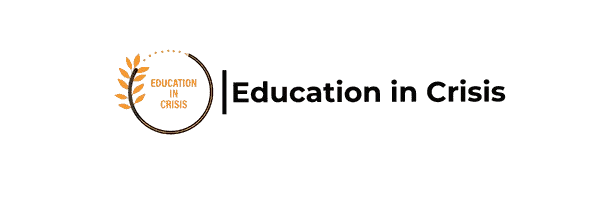Technology & Innovation in Learning
Every child deserves a chance. Be the reason they thrive today.
 DONATE NOW AND SUPPORT OUR MISSION.
DONATE NOW AND SUPPORT OUR MISSION.
Digital education to change the future of Africa
Technology & Innovation in Learning
In sub-Saharan Africa, more than half of primary school-aged children do not attend school. Digital education can bridge the learning gap in crisis areas. EiC integrates technology to expand access to quality learning.
World Bank notes that Education systems, especially in low- and- middle-income countries, face many daunting challenges. 53% of 10-year old children in low- and middle-income countries cannot read and understand a short paragraph, a figure that rises to over 80% in the poorest countries. 258 million students are out of school, including 59 million children of primary-school age. The situation is even worse in communities afflicted by conflict and violence. Girls and children with special educational needs are particularly being left behind. This learning crisis has been exacerbated by the health and economic crisis of COVID-19 (in the most pessimistic scenario, COVID-19- related school closures could increase the rate of 10-year old children who cannot read and understand a short paragraph in the low- and middle-income countries by 10 percentage points, from 53% to 63%).
EiC will support African governments in developing sector-wide and/or sub-sectoral policies and strategies to harness technology for education leveraging for example open educational resources and AI for the achievement of SDG 4. It will also establish regional platforms to facilitate the circulation of tools, ideas and data that foster technological innovation in service of education with a special focus on building inclusive and resilient learning systems for all.

Key Interventions
Solar-Powered Learning Centers in off-grid areas, Bringing Education: The Impact of Solar-Powered Learning, however, the problem is two-fold. Not only does a lack of access to devices and handsets mean that building a technology skillset is near impossible, but even when they do have the devices required, they cannot connect to anything. This double-edged sword makes the technology gap even harder to bridge than many believe – with consumers across the Western world conditioned to believe that a mobile signal and internet connection should be available anywhere and everywhere.

EiC beleieves that E-Learning & Digital Literacy Programs for refugee and displaced learners and Mobile Education Units & Community Radio Learning for remote areas are a lifeline responses to education in emergencies.
In sub-Saharan Africa, 61 million children between the ages of 6 and 11 don’t go to school. The reasons are numerous: poverty, armed conflict, forced displacement… According to data from UNESCO, more than one-fifth of children aged 6 to 11 do not attend school. Often, those who are able to attend do so in very precarious conditions (lack of educational materials, electricity, access to technology…) which has a huge effect on their future opportunities.
Ways How you can join EiC in Responding through solar power and connectivity
Working in partnerships in providing devices and refurbished computers to schools and communities will help them to build and maintain the infrastructure required to keep them connected.
A solar-powered learning lab which provides power to the computers that we supply, combatting the problem of non-existent or unreliable local connections can be a lifeline education intervention.
With support, we can install a connected device which creates a network to serve the local area, uniting all the computers onto a single system for cohesive access to all the learning resources and tools required to upskill both young and older learners.
Additionally, through the provision of a learning lab for Schools or community center, communities can develop ICT skills across and use a combination of classic learning and immersions techniques to engage pupils of all ages in the tools and skills that they can use to benefit from a well-rounded education.
Over one quarter billion children each year fail to attain basic numeracy and literacy skills before reaching secondary school age, and the annual cost of this learning failure is estimated to be US$129 billion (UNESCO, 2014).
We cannot do it alone. Together, stronger we can.
Education and learning are not just about books and classrooms; it’s about offering hope, resilience, and the promise of a better future.
Despite the small support provided by EiC and other humanitarian actors, the education needs of children in emergencies far exceeds the assistance that is currently provided.
Greater funding is urgently needed to support the world’s most vulnerable children left behind with lifesaving education.
Let’s stand together to support these children and safeguard their right to education.
Their futures depend on it.
